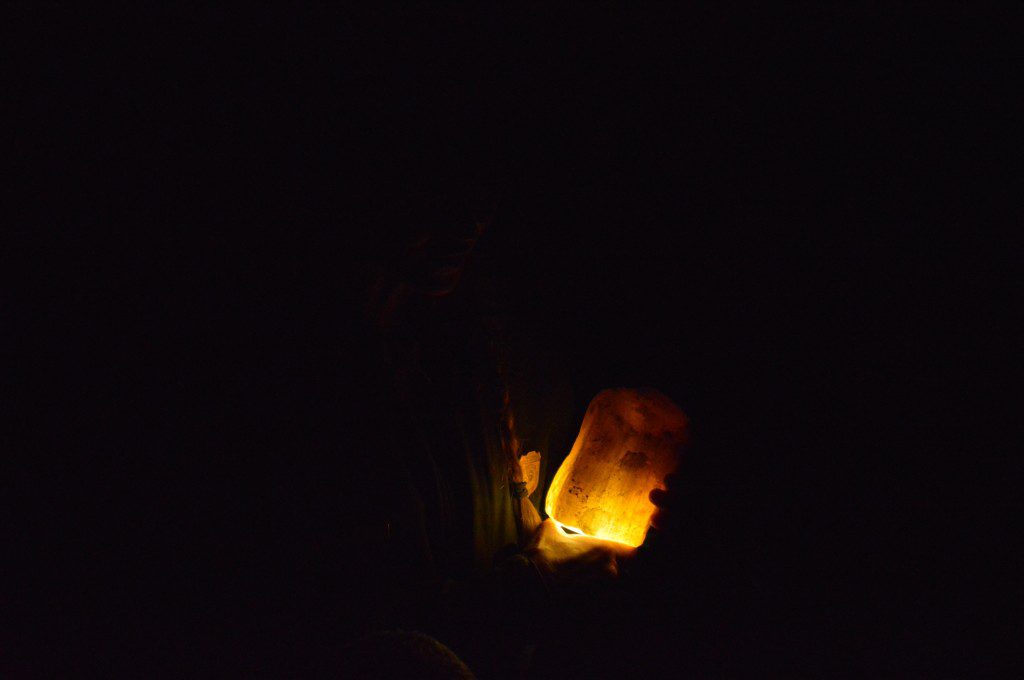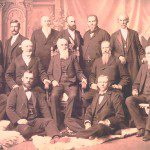Sharp divisions make it hard to pinpoint “how Mormons feel” about the policy barring children of same-sex married parents from blessing or baptism in The Church of Jesus Christ of Latter-day Saints, but these three things are true:
- Mormonism is charismatic.
- Mormonism is organized.
- Mormonism is Mormons.
By “Mormonism is charismatic” (from the term “charismata”, or gifts of the Holy Spirit including visions, healings, prophecy, etc.) I mean that its existence as a religious tradition is predicated on certain miraculous stories being real: first and foremost, the birth and divine mission of Jesus Christ, whose life set a perfect example, and later, the visions and inspiration given to Joseph Smith, a prophet called to reveal new ways of understanding humanity’s relationship with God. Mormonism’s affirmation of ongoing connection to God through prophetic and also personal revelation is like a live high-voltage wire—a conduit for power but also a serious liability. On the one hand, the personal experience of the Spirit is truly miraculous—a blessed anomaly, a life-changing reorientation, a joy. On the other hand, in the history of religious movements, charismatic power inevitably leads to schisms.
By “Mormonism is organized”, I mean that Mormon religious life unfolds not only within an individual’s inner spiritual life, but within the context of a local community and a globally centralized institutional hierarchy. Handbooks prescribe exactly how to perform a certain rite, specify procedures for selecting leaders, and define acceptable and unacceptable community behavior. Layers and layers of institutional structures have been built up—and continue to accumulate—with the intention of channeling what is beneficial and insulating against what is potentially destabilizing in Mormonism’s charismatic claims. These highly bureaucratized structures are like insulation around the wire—limiting the directions in which power may flow, conserving energy, guarding against shock. For example, if a Mormon bishop hears of a congregant who claims that God has commanded him to sacrifice his young son on an altar with a kitchen knife and start a new Church of Jesus Christ of Latter-day Abrahams, the bishop will intervene (with the backing of a section in the Handbook that states that abuse of a child cannot be tolerated in any form).
By “Mormonism is Mormons”, I mean that Mormonism is made up of individual Mormons who are producers of religion just as much as they are consumers of it. Mormonism is not defined by creeds (standardized expressions of core doctrine) but by councils (groups of Mormons acting together). Those who currently occupy the highest levels of leadership were all originally chosen from the ranks of weekend Sunday School teachers and youth leaders and asked to spend more and more time (and eventually all their time) sitting on church councils. In this sense the distance between the church’s top leadership and lay members can be quite close in terms of everyday experience and shared culture, although of course there are wide variations globally between the experience of members and leaders from Spanish Fork, Utah, and the experience of members and leaders from Mitaka, Japan. Mormonism is not a monolith—not its top leadership, not its culture, and not its people. It is a living body, electric and vital, comprised of systems, organs, and cells.
Those who view the policy as evidence that all Mormons are homophobes or that church leaders are entirely unsympathetic to sexual minorities are wrong. Many Mormons are passionate advocates for the rights of minority groups, including the LGBT community, and the church itself has supported civil rights legislation for LGBT persons in Utah. The release of a video with Elder Todd Christofferson is an attempt to show good faith and integrity on a personal scale to explain the Church’s approach to a complex and sensitive issue. To me, in this video he comes across as sincere—though clearly uncomfortable because he anticipates that many will doubt his sincerity—when he says that if you believe that a person’s behavior is grievously wrong and contrary to God’s commandments, you do that person no favors by pretending that you accept her behavior. According to the dialogue conventions of the Mormon Chapter of the Foundation for Religious Diplomacy, of which I am a member, here he would be “answering the tough questions” as he shared his deeply held beliefs with integrity and candor.
Those who view the outcry against the policy as evidence that those who express consternation are unfaithful Mormons are wrong. Despite the compassionate intent that Elder Christofferson expressed in the videorecording, the policy has created or reopened deep emotional wounds in gay and lesbian Mormons and their family members. As put by Tom Christofferson, Elder Christofferson’s gay brother, the policy perpetuates “the problem of treating people as groups instead as individuals”, without making allowance for various compassionate and pastorally sensible arrangements. Baptisms eagerly awaited on Saturday were cancelled. Children of mixed-orientation and same-sex marriages now stand to be stigmatized and, even more significantly, barred from receiving Christ and developing sensitivity to the companionship of the Holy Ghost in their formative years. People sincerely wonder: How is it Christlike (and in keeping with the church’s Second Article of Faith, and the Handbook’s prohibition against the abuse of a child in any form) to bar little children from baptism because of their parents’—or one parent’s—behavior? [1] How will it not cause incredible emotional harm to a little child to tell her that she cannot be baptized like the rest of her Primary class because her father divorced her mother and remarried a man? [2]
This sharp disagreement over the Christlike course of action is demoralizing in a worldwide church held together despite vast cultural divides by common emulation of Jesus Christ, who in the canonized scriptures never said anything about marriage except that those who were divorced were like the angels in heaven, but who is much better known for declaring that the greatest Commandment after loving God was to love others as ourselves. The power of Christ’s love is real, and the reason why people become Mormon and stay Mormon is because they have felt it—from God, and from people. Living this Second Great Commandment brings the Spirit and gives life joy. This is why many people’s reactions are so raw. They perceive a conflict between Christ’s charismatic pattern of ignoring religious rules to bless social and spiritual outcasts and the organizational boundary-keeping set out in the policy.
These three elements—charisma, organization, people—exist in a state of dynamic tension and have shaped Mormon life for close to two centuries. In their various combinations they have brought about numerous doctrines, practices, policies, and ways of life: temple ordinances, polygamy, worldwide evangelization, women’s healing blessings, the cessation of polygamy, the cessation of women’s healing blessings, the exclusion of blacks from the priesthood, the church welfare system, the inclusion of blacks in the priesthood, video recordings of temple ordinances, translations of temple ordinances into dozens of languages, relief for Hurricane Katrina victims and wells for people in Madagascar. [3]
Defining the charismatic beyond the bounds of religion and more broadly as compelling, universalistic moral ideology, the productive tension between charismatic and institutional impetuses drives nearly all large human organizations: Pope Francis’s Catholic church, the United States of America, the Chinese Communist Party. Like the grinding forces in an electric generator, it is this tension that keeps the power flowing. Both are essential. You can’t just have divine love, and you can’t just have handbooks.
The Church of Jesus Christ of Latter-day Saints and its members have had a bad weekend. These past few days have brought to the fore divisions over core interpretations of Christian community. People have taken to social media, email, and Sunday School to declare support or dismay, to report personal divine revelation both for and against the policy. They have ranted. They have wept. They have taken their concerns to God. How does it all work? How do our Heavenly Parents feel when their children fight over how to be good? I have no idea. Fortunately, as is the case with all eternal relationships–and as my Uncle Dillon would say–“the first million years are the hardest.”
One thing of which I am certain is that the rhetoric of church leaders and members on same-sex attraction has evolved in the generally positive direction of greater understanding and sympathy, considering where we were twenty years ago, and will continue to evolve. Since this policy was intended as a compassionate measure, I am hopeful that those who make policies will appreciate the way in which the discussion and debate surrounding this issue has highlighted numerous negative consequences that the policymakers may not have intended. I am hopeful that future policy changes are in store that will be more effective in demonstrating love and understanding. This is not about political correctness, but about protecting the life of the religious community. True, at various points in a religion’s existence, people are asked to simply “get in line”. But over time, long queues do not make for thriving charismatic movements, and charisma is Mormonism’s lifeblood. Without the electric joy that comes from a mutual experience of the love of Jesus Christ, we will struggle, limited in our ability to succor those in need.
Of the three statements with which I began this piece, the last is most important: Mormonism is Mormons. Mormons live their religion within a dense network of relationships, vertical and horizontal. With the vitality and intimacy of these relationships comes great responsibility—more than a citizen owes to an elected official or visa versa, more than a midfielder owes to a team. Our practice within a lay leadership structure gives us familiarity with the refining processes of leading and being led, making mistakes and making amends.
The key to moving forward as a Church that desires to be defined by common faith in Jesus Christ is to reach out to each other, to speak candidly and humbly in councils and in private, to bind up the wounds and to apologize where unintentional hurt has been inflicted. We have stood shoulder to shoulder in holy places and covenanted to love and serve one another, with God as our witness. The Church of Jesus Christ of Latter-day Saints is not an organizational machine of cranks and cogs that are easily replaced, but the body of Christ, powerful and electric, sensitive and fragile, with limbs and organs that we cannot afford to slough off. To either bring to pass the compassionate intent or mitigate the hurtfulness of this policy, we must look to our own families and congregations, where our religious lives take place. Here, where we know and are known, love and are loved, we must find the charity that will allow us to be a blessing in the lives of those to whom God has given us. [4]
[1] Thanks to Kristine Haglund and Jonathan Stapley for sharing the following quote from George Q. Cannon, then First Counselor in the First Presidency of the Church: “In some minds there seems to be an idea that there should be a different form of blessing for children born of non-members and for those who are identified with the Church; and it is from such sources that in the case of children belonging to members of the Church ‘the blessings of Abraham, Isaac and Jacob’ and all the attendant favors are frequently conferred upon the child. This is all wrong. If we take the example of our Lord and Redeemer, who is our pattern and whose example we cannot too closely follow, we find that He blessed all who were brought to Him. We have no hint that He asked whose children they were, or the standing or faith of their parents. His remark was, ‘Suffer little children, and forbid them not, to come unto me, for of such is the Kingdom of Heaven;’ and He laid His hands upon them and blessed them. All little children, no matter what their parentage may be, are innocent in the sight of heaven, and they should be received as such and blessed as such.”
The Editor [George Q. Cannon], “Topics of the Times,” Juvenile Instructor 34 (March 1, 1899): 137-138. Reprinted in Latter-day Saints’ Millennial Star 61 (March 30, 1899), 198-199; Latter-day Saints’ Southern Star 1 (April 29, 1899): 170.
[2] More recently, in the 2012 General Conference talk titled “Protect the Children,” Elder Dallin H. Oaks affirmed the gravity of psychological or emotional hurt: “When we consider the dangers from which children should be protected, we should also include psychological abuse. Parents or other caregivers or teachers or peers who demean, bully, or humiliate children or youth can inflict harm more permanent than physical injury. Making a child or youth feel worthless, unloved, or unwanted can inflict serious and long-lasting injury on his or her emotional well-being and development. Young people struggling with any exceptional condition, including same-gender attraction, are particularly vulnerable and need loving understanding—not bullying or ostracism.”
[3] It is impossible to link to all of the rich scholarship on these topics, but as a start, if you haven’t already found these books, consider the following: for early Mormonism, Richard Bushman’s Joseph Smith: Rough Stone Rolling (New York: Knopf, 2005), Samuel Brown’s In Heaven as It Is on Earth: Joseph Smith and the Early Mormon Conquest of Death (New York: Oxford University Press, 2012), and John Turner’s Brigham Young: Pioneer Prophet (Cambridge: Belknap, 2012); for twentieth century Mormonism, Greg Prince’s David O. McKay and the Rise of Modern Mormonism (Salt Lake City: University of Utah Press, 2005), Paul Reeve’s Religion of a Different Color: Race and the Mormon Struggle for Whiteness (New York: Oxford University Press, 2015). For a more exhaustive list, try the Juvenile Instructor’s reading list. For extensive secondary and primary sources in digital form, consult the BYU library’s Mormon Studies subject guide.
[4] I have written further about my experience as a child in a local Mormon congregation in the recent book from White Cloud Press, A Book of Mormons, forthcoming at the end of November 2015.












